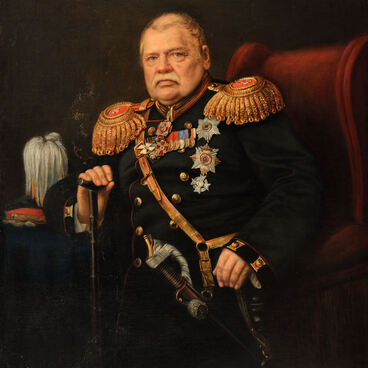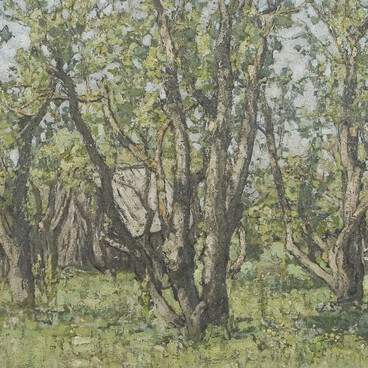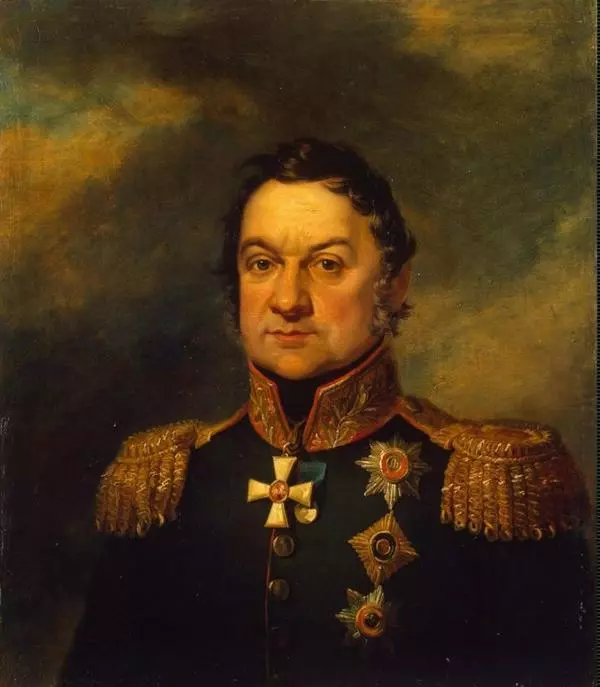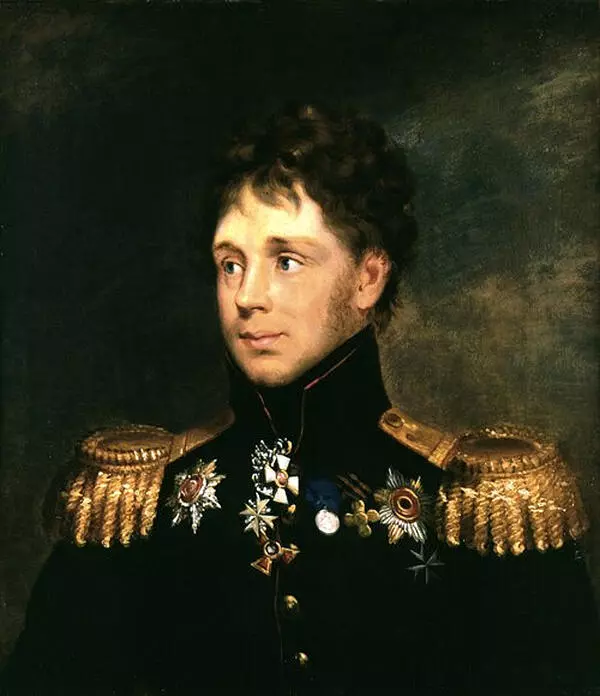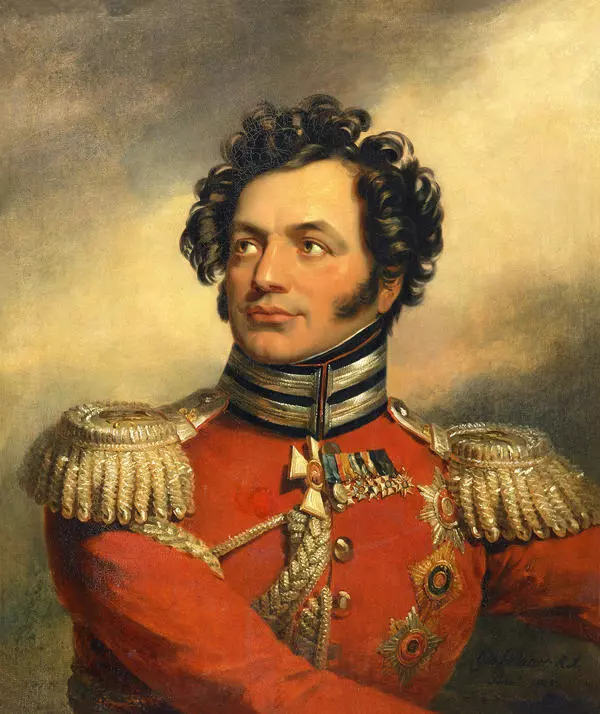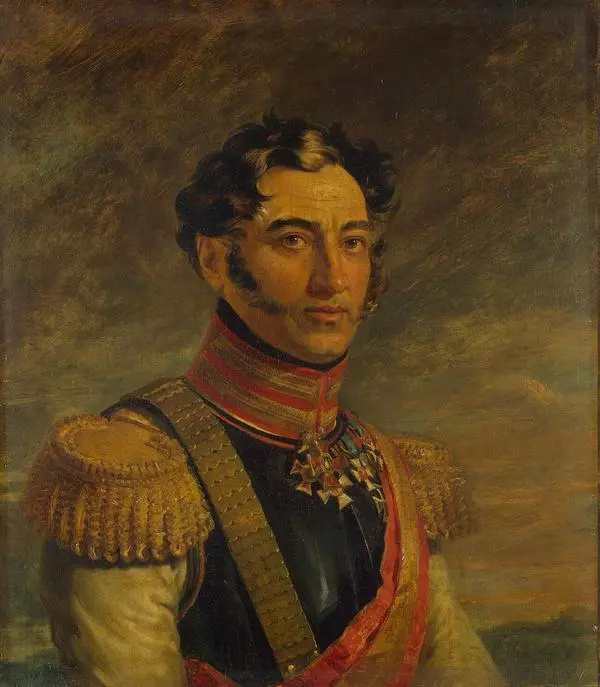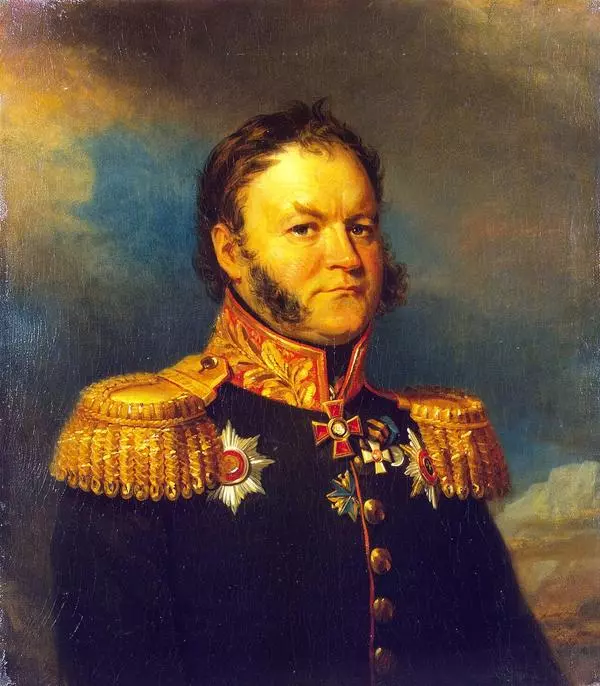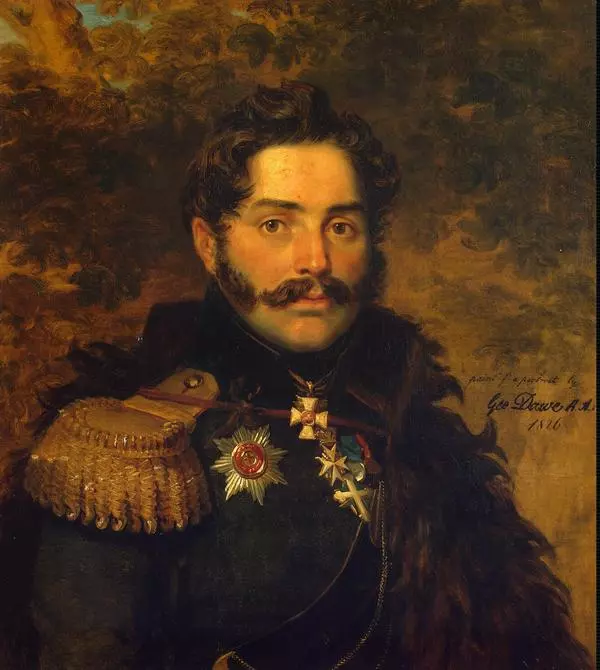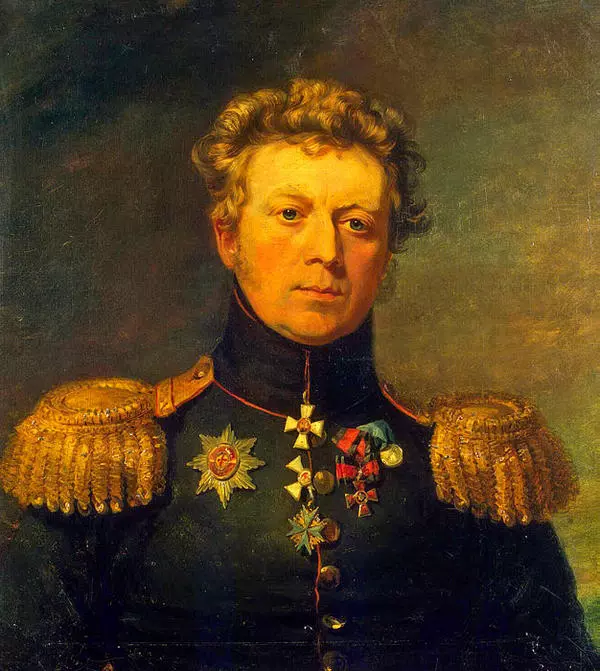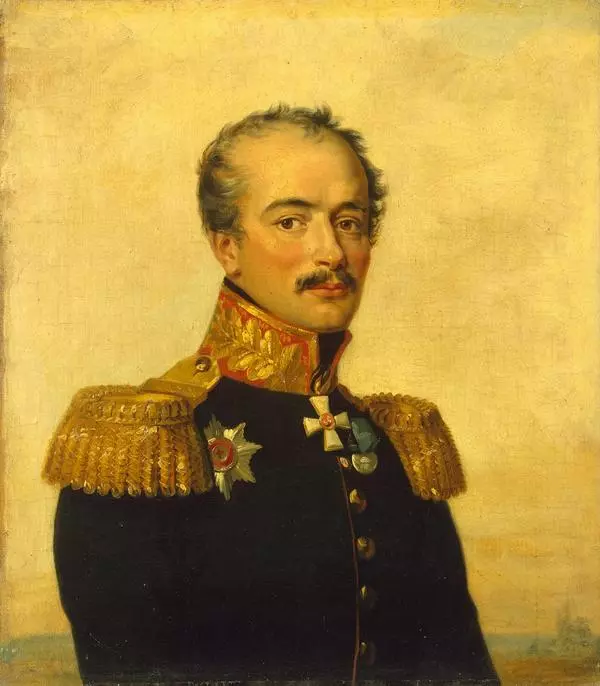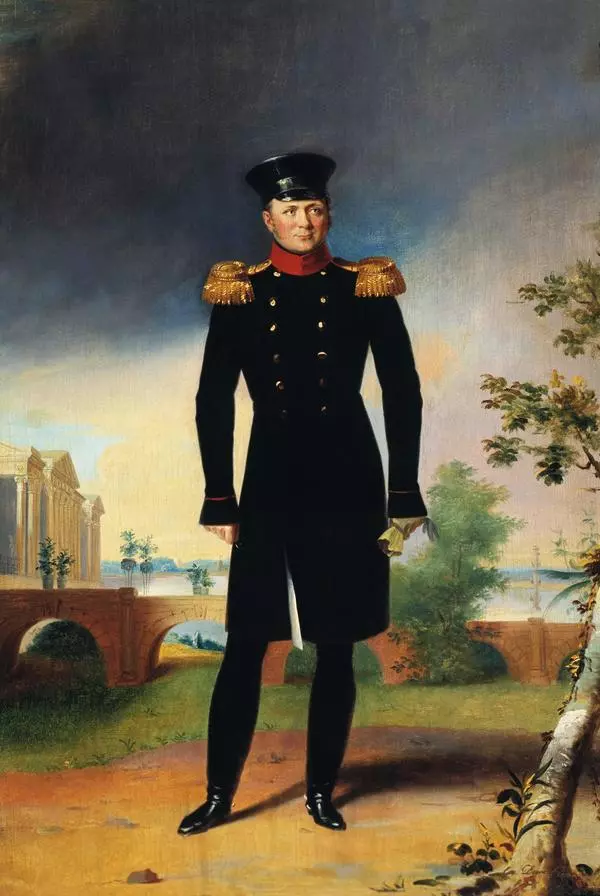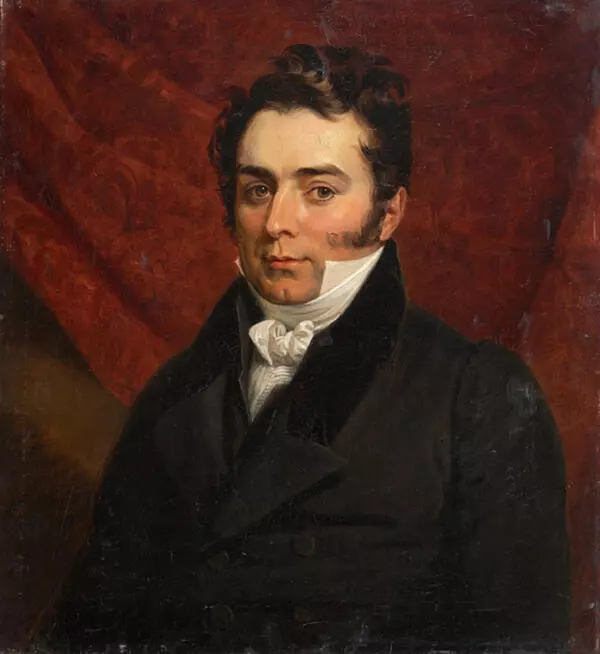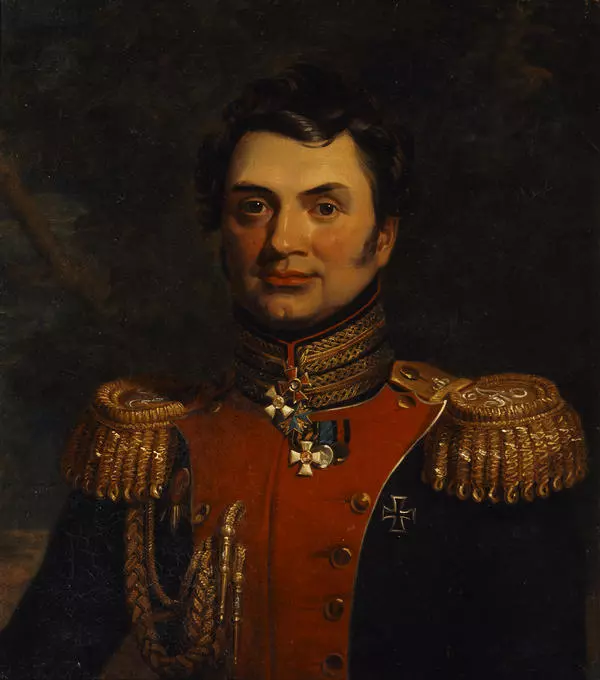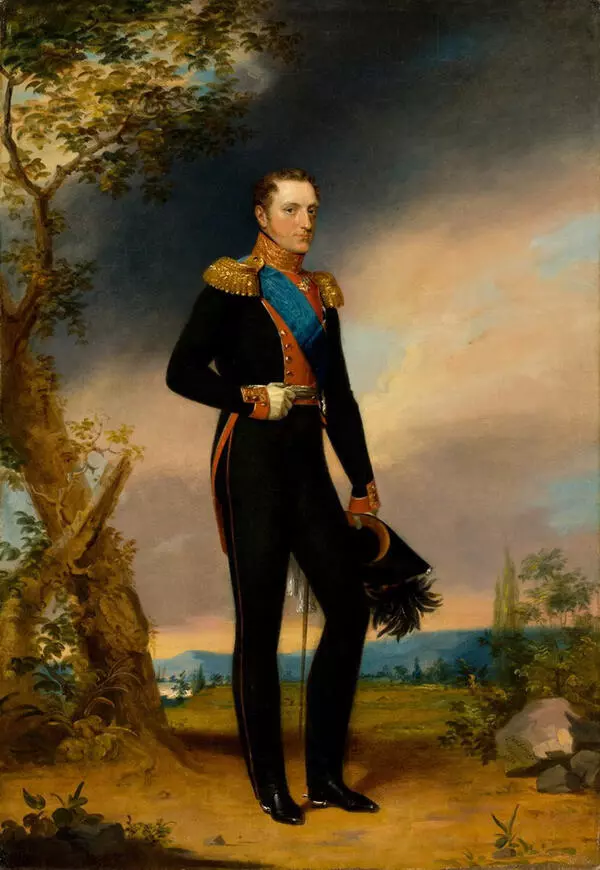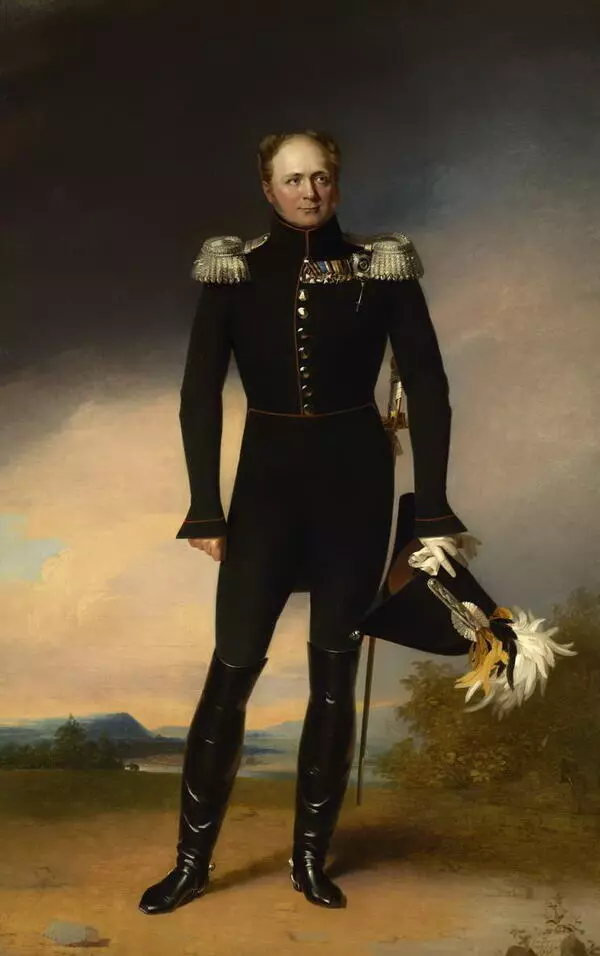George Dawe was an English artist and portraitist. He was born in 1781 in London. He studied under his father, the engraver Philip Dawe, and then at the Royal Academy of Arts in London.
Dawe was mainly famous for his ceremonial portraits of statesmen and romanticized images of brave military men.
George Dawe worked in Russia from 1819 to 1828 at the invitation of Emperor Alexander I. Together with his assistants, Alexander Polyakov and Wilhelm August Golicke, the artist created over 300 portraits of heroes of the Patriotic War of 1812 for the Military Gallery at the Winter Palace. In 1828, Dawe received the title of court painter and soon left St. Petersburg. In 1829, he returned to Russia to paint a portrait of Grand Duke Konstantin Pavlovich and finish several portraits for the Military Gallery. But his rapidly deteriorating health forced him to return back to London, where he died in October 1829.
When the museum received the displayed portrait, no information about the sitter was provided. This is a half-length portrait of a man in the military uniform of the early 19th century. Shoulder straps and epaulettes are silver, the trim does not have fringe. The collar is red and completely covers the neck.
An employee of the museum, after examining the awards, suggested that the artist depicted Friedrich Wilhelm III, the father of the Russian Empress Alexandra Feodorovna, the grandfather of Alexander II.
A comparative analysis of the works of other artists who painted the King of Prussia established that there are external similarities among the portraits of Friedrich Wilhelm III by Franz Kruger and Thomas Lawrence and the “Portrait of a Military Man” from the National Art Museum of the Sakha Republic.
The portrait was not intended to be displayed at a formal exhibition, but rather to be hung in a small room or be part of a wall gallery. The king is depicted in a military uniform, instead of ceremonial attire, although Dawe depicted even minor princes and dukes in their most lustrous outfits. He also did not depict the ribbon of the Order of the Black Eagle, which was supposed to be worn according to the regulations for ceremonial attire. Thus, the canvas could have been commissioned by the daughter of Frederick William III, Grand Duchess Alexandra Feodorovna, between 1820 and 1825 for displaying at home.
Dawe was mainly famous for his ceremonial portraits of statesmen and romanticized images of brave military men.
George Dawe worked in Russia from 1819 to 1828 at the invitation of Emperor Alexander I. Together with his assistants, Alexander Polyakov and Wilhelm August Golicke, the artist created over 300 portraits of heroes of the Patriotic War of 1812 for the Military Gallery at the Winter Palace. In 1828, Dawe received the title of court painter and soon left St. Petersburg. In 1829, he returned to Russia to paint a portrait of Grand Duke Konstantin Pavlovich and finish several portraits for the Military Gallery. But his rapidly deteriorating health forced him to return back to London, where he died in October 1829.
When the museum received the displayed portrait, no information about the sitter was provided. This is a half-length portrait of a man in the military uniform of the early 19th century. Shoulder straps and epaulettes are silver, the trim does not have fringe. The collar is red and completely covers the neck.
An employee of the museum, after examining the awards, suggested that the artist depicted Friedrich Wilhelm III, the father of the Russian Empress Alexandra Feodorovna, the grandfather of Alexander II.
A comparative analysis of the works of other artists who painted the King of Prussia established that there are external similarities among the portraits of Friedrich Wilhelm III by Franz Kruger and Thomas Lawrence and the “Portrait of a Military Man” from the National Art Museum of the Sakha Republic.
The portrait was not intended to be displayed at a formal exhibition, but rather to be hung in a small room or be part of a wall gallery. The king is depicted in a military uniform, instead of ceremonial attire, although Dawe depicted even minor princes and dukes in their most lustrous outfits. He also did not depict the ribbon of the Order of the Black Eagle, which was supposed to be worn according to the regulations for ceremonial attire. Thus, the canvas could have been commissioned by the daughter of Frederick William III, Grand Duchess Alexandra Feodorovna, between 1820 and 1825 for displaying at home.


